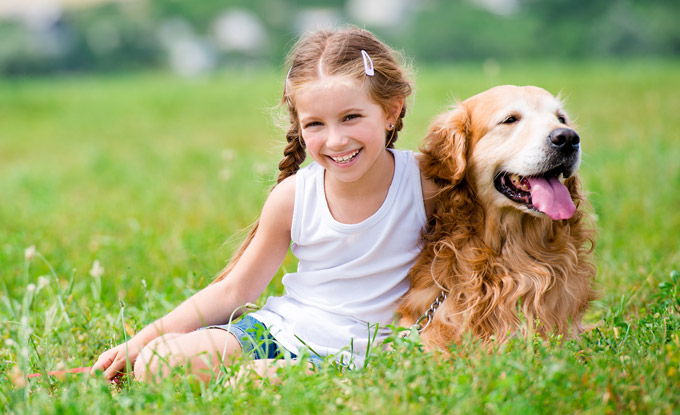
Kids And Dogs: Keeping Everyone Safe This Summer
DID YOU KNOW?
- The CDC estimates that half off all kids 12 years and under have been bitten by a dog.
- Of the 4.5 million dog bites reported in 2015, 42% of the bitten were under 11 years old.
“[Dogs are not] as dangerous, of course, as kitchen utensils, drapery cords, five-gallon buckets, horses or cows. Not nearly as dangerous as playground equipment, swimming pools, skateboards, or bikes (Janis Bradley from her book Dogs Bite: But Balloons and Slippers Are More Dangerous).”
We all have heard stories of kids being bitten by dogs, even if we haven’t lived the experience personally. The statistics can be alarming, but there are many ways to prevent these accidents from happening. You, of course, know the benefits of having a well-trained, manageable and obedient dog. Training kids, however? Unfortunately, not all adults teach their children how to behave around animals, and many have no idea how to deal with kids and pets. For example, proper body language, like approaching a dog from the back or the side and not hovering over him, is extremely important. Encourage the child to play calmly with him, avoid direct eye contact, and refrain from picking him up. Also, explain to her that Fido needs to be alone at times, and his personal space should be respected.
Children—especially younger kids—should be supervised around the family dog. Rough play or an accidental tumble could result in defensive growling, snapping, or even biting. By the same token, your dog must be supervised as well to prevent unintended injury to your child; know that both his breed type and activity level may affect how well he interacts with children.
Your dog should be schooled in basic obedience techniques, such as sit, down, come, place, leave it, and drop it. A well-trained canine is easier to manage around small children. Learning about his body language is the first step in keeping your kids and pets safe. When observing a dog’s body language to determine what is being communicated, it is crucial to observe the entire dog, as well as the situation/context, in order to accurately determine what is being conveyed. For example, a wagging tail does not necessarily mean a friendly dog. A moving tail, as a part of the dog’s body language that is readily identifiable, is often noticed first. However, if the dog’s body is stiff, the ears are back and the dog is in a crouching position, these other features of body language are telling you that this is not a happy dog. Take precaution to ensure that you can manage not only Fido, but any little humans around in the event that such signals appear.
While some types and breeds of pets tend to be calmer around children, every animal is an individual. No pet is guaranteed to be safe around children. When someone tells you a certain breed is “the best family dog,” take that advice with a grain of salt. Any dog will bite if pushed hard enough, and there is no such thing as a pet that is safe for kids.
Above all, respect your dog! As hard as it may be to imagine, not all dogs appreciate the company of children. Don’t force these kinds of interactions on your canine companion—this could lead to a host of negative consequences. With summer rapidly approaching, your doggo will likely be joining you out and about, around unfamiliar areas and folks who may or may not have the same expectations in dog greetings and manners that you have. Awareness is key to keep both kids and canines as safe as possible!
